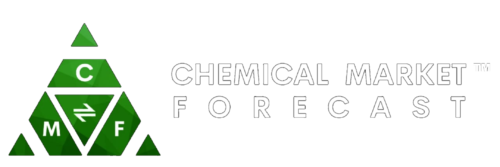Global Amino Resins Market
Thermosetting resins with excellent tensile strength, impact resistance, and hardness are amino resins. Amino resins consist of aldehyde-copolymerization of amides or amines. Amino resins contribute to the production of coating films; when used in a blend with alkyd resins, polyester resins, epoxy, ester resins, or acrylic resins, they improve solvent resistance and hardness. Wood products, such as plywood, particleboard, and MDF, paper, and cloth coatings, also use amino resins. Amino resins also find their use as adhesives. Polyester, epoxy, acrylic, and alkyd resins provide the perfect combination of resilience, chemical resistance, film strength, and external toughness.
As a result of rapid urbanization, rising per capita disposable income, increasing automotive production and sales, the global amino resin market is growing. Also, it expects that continuous growth in the automotive industry, coupled with customer perception of the maintenance aspect of automobiles, would propel market growth. The demand for personal vehicles increased due to rapid industrialization and growing numbers of working people, which in turn has increased the production and sales of automotive vehicles. This industrialization and growing numbers anticipate that increasing investment in the construction & construction sector, as well as the continuous expansion of the construction & construction industry in the developing regions, would fuel demand growth. Strict regulations regarding the number of formaldehyde emissions would also impede the market growth.
For major economies such as India, China, and the United States, the residential construction growth rate projections for 2020 are 9%, 4%, and 3%, respectively. The demand for furniture, such as plywood, chipboard, particleboard, medium-density fiberboard, sawdust board, has increased significantly with the growing housing construction and population worldwide. Interior ideas relevant to houses, workplaces, and flats are continually evolving. This evolution drives growth and creativity, mainly in terms of designs, scale, and colors. The use of urea-formaldehyde (UF), melamine-formaldehyde (MF), and melamine-urea-formaldehyde (MUF) expect to increase, to be used primarily as adhesives in the wood paneling industry.
The demand for amino resins anticipates growing at a CAGR of 4% during the forecast period of 2021-2026. The main driving factor for the study of the market is increasing demand from the paint & adhesives industries. On the flip side, hazardous air pollutants produced during the manufacture of amino resin and unfavorable conditions arising from the COVID-19 outbreak are hampering the market growth.
The dominant amino resin consumption market expects to be the Asia-Pacific region. This expectation is because of end-use industries such as adhesives & sealants, paints & coatings, the textile industry, etc. China dominates the market, accounting for almost 50 percent of both urea-formaldehyde (UF) and melamine-formaldehyde, which was the largest producer of amino resin in 2020 (MF). Due to the higher production of panels for furniture and other products used in interior applications, growth is strong in China. The dominant exporter of wood furniture to Europe is China, too. The Asia-Pacific region is the largest market in demand, accounting for more than 40% of the world’s demand for paints & coatings.
Scope of Global Amino Resins Market:
The study period of this report, ” Global Amino Resins Market.” ranges from 2020-2026, and the forecast period of this report is from 2021-2026.
- The report provides a thorough survey of the industry, including its meaning, applications, and manufacturing technology.
- The report covers the key drivers, restraints, and challenges that expect to shape the Global Amino Resins market in detail.
- The report studies the international industry stakeholders in detail.
- The report depicts the Global Amino Resins Market, which includes the production, value chains, supply, and demands, which explains itself using statistical analysis.
- The total market is further divided by application, by end-users, by type and, by region, which is discussed in-depth for the competitive landscape analysis.
- The report estimates the 2021-2026 market development trends of the Global Amino Resins Market. It provides an analysis of upstream raw materials, downstream demand, and current market dynamics.
TABLE OF CONTENTS
Global Amino Resins Market Report
1. Market Introduction of Global Amino Resins Market
2. Market Segmentation of Amino Resins Market
2.1 Global Amino Resins Market Segmentation By Region
2.2 Global Amino Resins Market Segmentation By Type
2.3 Global Amino Resins Market Segmentation By Crop Type
3. Cost Structure Analysis of Amino Resins Market
4. Country Analysis of Global Amino Resins Market
4.1 China
4.1.1 Amino Resins Market Size in China
4.1.2 Amino Resins Market Analysis in China
4.1.3 Key Amino Resins companies in China
4.1.4 Regulatory Framework of Amino Resins Market in China
4.2 Germany
4.2.1 Amino Resins Market Size in Germany
4.2.2 Amino Resins Market Analysis in Germany
4.2.3 Key Amino Resins companies in Germany
4.2.4 Regulatory Framework of Amino Resins Market in Germany
4.3 France
4.3.1 Amino Resins Market Size in France
4.3.2 Amino Resins Market Analysis in France
4.3.3 Key Amino Resins companies in France
4.3.4 Regulatory Framework of Amino Resins Market in France
4.4 Italy
4.4.1 Amino Resins Market Size in Italy
4.4.2 Amino Resins Market Analysis in Italy
4.4.3 Key Amino Resins companies in Italy
4.4.4 Regulatory Framework of Amino Resins Market in Italy
4.5 Netherland
4.5.1 Amino Resins Market Size in Netherland
4.5.2 Amino Resins Market Analysis in Netherland
4.5.3 Key Amino Resins companies in Netherland
4.5.4 Regulatory Framework of Amino Resins Market in Netherland
4.6 Russia
4.6.1 Amino Resins Market Size in Russia
4.6.2 Amino Resins Market Analysis in Russia
4.6.3 Key Amino Resins companies in Russia
4.6.4 Regulatory Framework of Amino Resins Market in Russia
4.7 Canada
4.7.1 Amino Resins Market Size in Canada
4.7.2 Amino Resins Market Analysis in Canada
4.7.3 Key Amino Resins companies in Canada
4.7.4 Regulatory Framework of Amino Resins Market in Canada
4.8 Mexico
4.8.1 Amino Resins Market Size in Mexico
4.8.2 Amino Resins Market Analysis in Mexico
4.8.3 Key Amino Resins companies in Mexico
4.8.4 Regulatory Framework of Amino Resins Market in Mexico
4.9 Singapore
4.9.1 Amino Resins Market Size in Singapore
4.9.2 Amino Resins Market Analysis in Singapore
4.9.3 Key Amino Resins companies in Singapore
4.9.4 Regulatory Framework of Amino Resins Market in Singapore
4.10 United Kingdom
4.10.1 Amino Resins Market Size in United Kingdom
4.10.2 Amino Resins Market Analysis in United Kingdom
4.10.3 Key Amino Resins companies in United Kingdom
4.10.4 Regulatory Framework of Amino Resins Market in United Kingdom
4.11 Switzerland
4.11.1 Amino Resins Market Size in Switzerland
4.11.2 Amino Resins Market Analysis in Switzerland
4.11.3 Key Amino Resins companies in Switzerland
4.11.4 Regulatory Framework of Amino Resins Market in Switzerland
4.12 Brazil
4.12.1 Amino Resins Market Size in Brazil
4.12.2 Amino Resins Market Analysis in Brazil
4.12.3 Key Amino Resins companies in Brazil
4.12.4 Regulatory Framework of Amino Resins Market in Brazil
4.13 USA
4.13.1 Amino Resins Market Size in US
4.13.2 Amino Resins Market Analysis in US
4.13.3 Key Amino Resins companies in US
4.13.4 Regulatory Framework of Amino Resins Market in US
4.14 Japan
4.14.1 Amino Resins Market Size in Japan
4.14.2 Amino Resins Market Analysis in Japan
4.14.3 Key Amino Resins companies in Japan
4.14.4 Regulatory Framework of Amino Resins Market in Japan
4.15 South Korea
4.15.1 Amino Resins Market Size in South Korea
4.15.2 Amino Resins Market Analysis in South Korea
4.15.3 Key Amino Resins companies in South Korea
4.15.4 Regulatory Framework of Amino Resins Market in South Korea
4.16 India
4.16.1 Amino Resins Market Size in India
4.16.2 Amino Resins Market Analysis in India
4.16.3 Key Amino Resins companies in India
4.16.4 Regulatory Framework of Amino Resins Market in India
4.17 Thailand
4.17.1 Amino Resins Market Size in Thailand
4.17.2 Amino Resins Market Analysis in Thailand
4.17.3 Key Amino Resins companies in Thailand
4.17.4 Regulatory Framework of Amino Resins Market in Thailand
4.18 Russia
4.18.1 Amino Resins Market Size in Russia
4.18.2 Amino Resins Market Analysis in Russia
4.18.3 Key Amino Resins companies in Russia
4.18.4 Regulatory Framework of Amino Resins Market in Russia
4.19 Malaysia
4.19.1 Amino Resins Market Size in Malaysia
4.19.2 Amino Resins Market Analysis in Malaysia
4.19.3 Key Amino Resins companies in Malaysia
4.19.4 Regulatory Framework of Amino Resins Market in Malaysia
4.20 Saudi Arabia
4.20.1 Amino Resins Market Size in Saudi Arabia
4.20.2 Amino Resins Market Analysis in Saudi Arabia
4.20.3 Key Amino Resins companies in Saudi Arabia
4.20.4 Regulatory Framework of Amino Resins Market in Saudi Arabia
5. Global Amino Resins Market Trends
5.1 Global Amino Resins Market Trends- Key Drivers
5.2 Global Amino Resins Market Trends- Key Restraints
5.3 Global Amino Resins Market Trends- Key Challenges
5.4 Porter’s Five Forces Analysis of Amino Resins Market
5.5 PEST Analysis- Amino Resins Market
6. Global Amino Resins Market Forecast
6.1 Global Amino Resins Market Forecast By Region
6.1.1 North America
6.1.2 Europe
6.1.3 APAC
6.1.4 Middle East
6.1.5 ROW
6.2 Global Amino Resins Market Forecast By Type
6.2.1 Fertilizer
6.2.2 Pesticide
6.3 Global Amino Resins Market Forecast By Crop Type
6.3.1 Fruits & Vegetables
6.3.2 Oilseed and Pulses
6.3.3 Cereals & Grains
6.3.4 Other
7. Supply Chain Analysis of the Amino Resins Market
8. Opportunity Analysis
9. Scenario Analysis
10. Key Company Profiles
11. Strategic Conclusions





